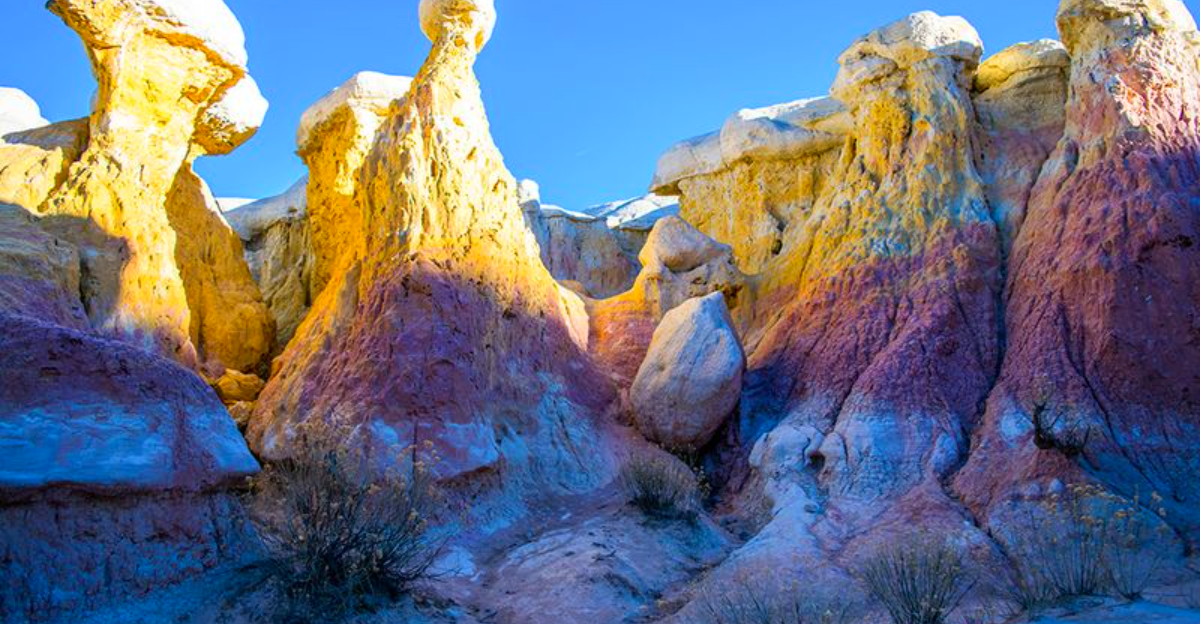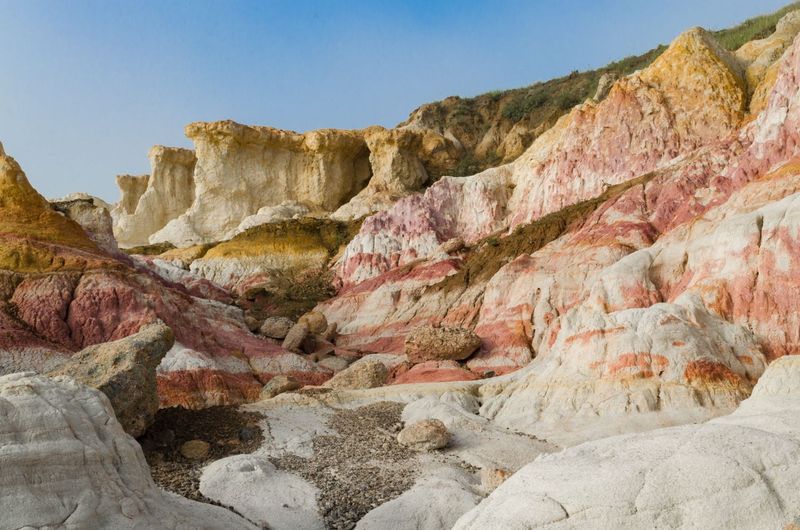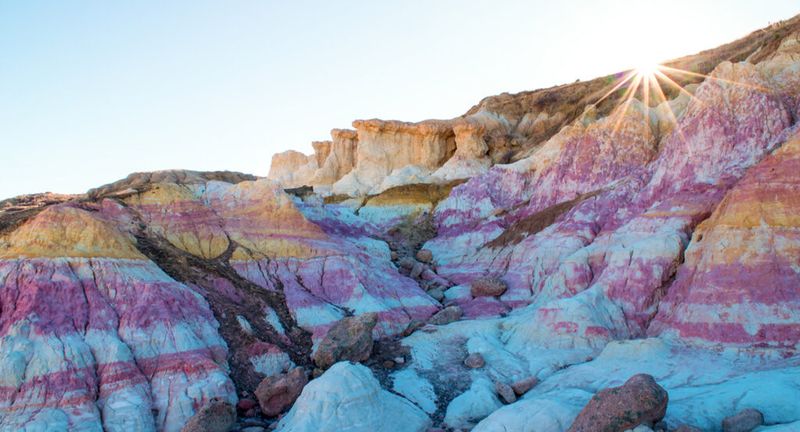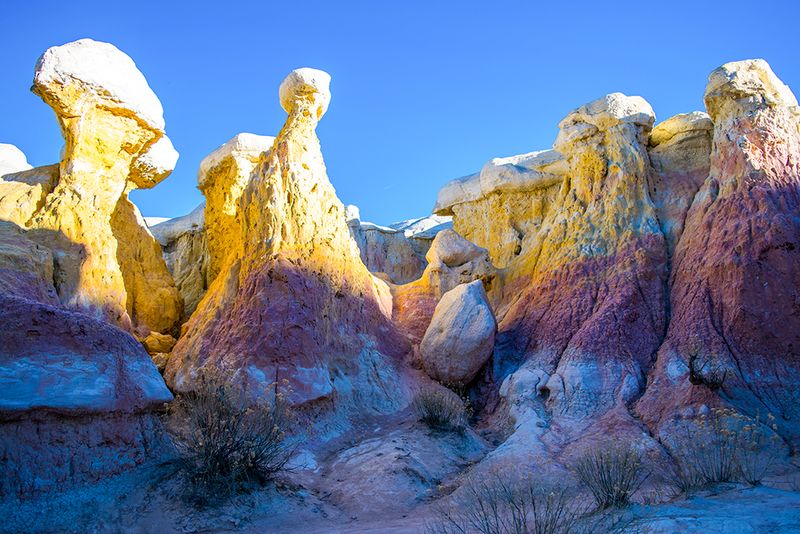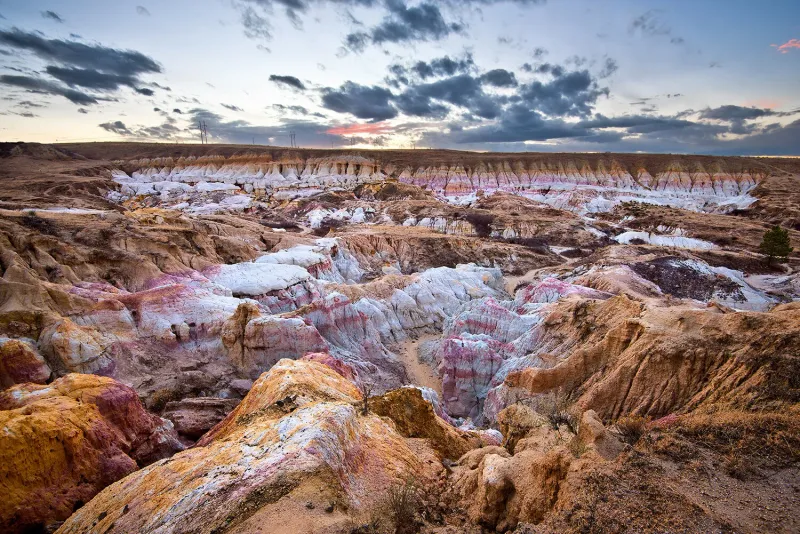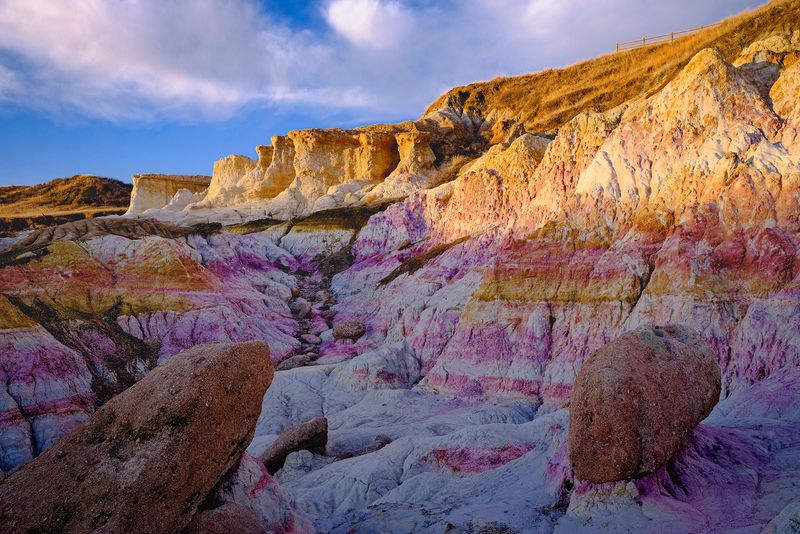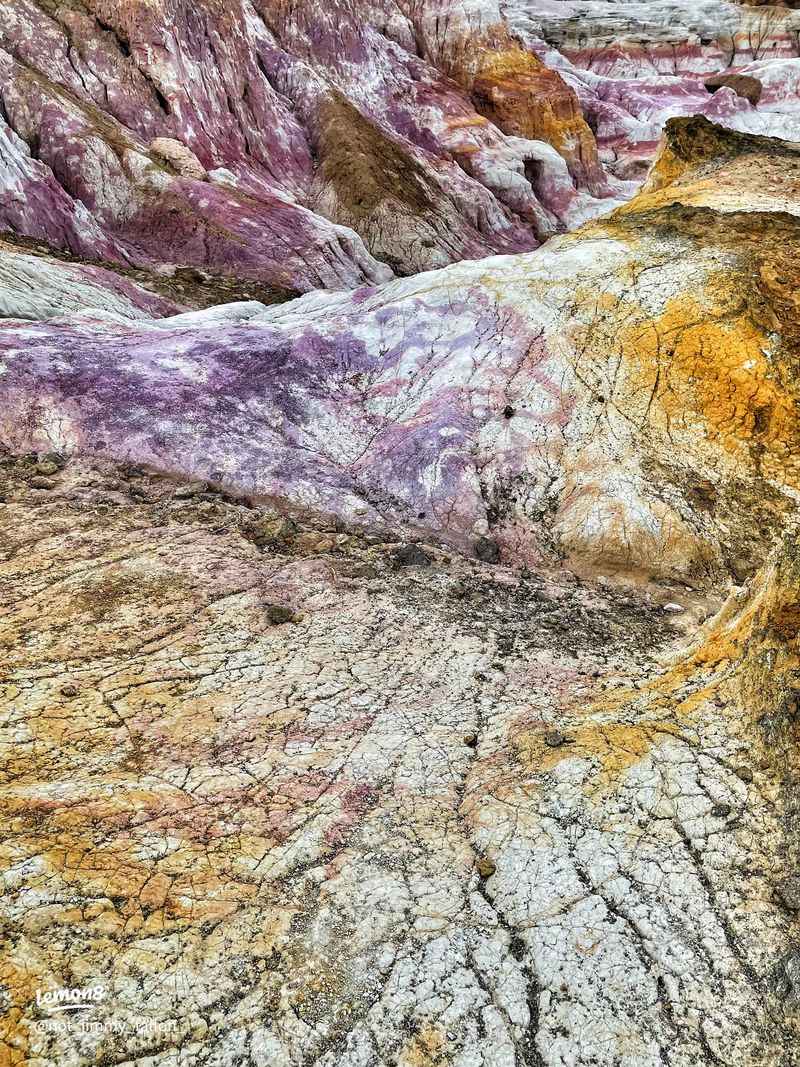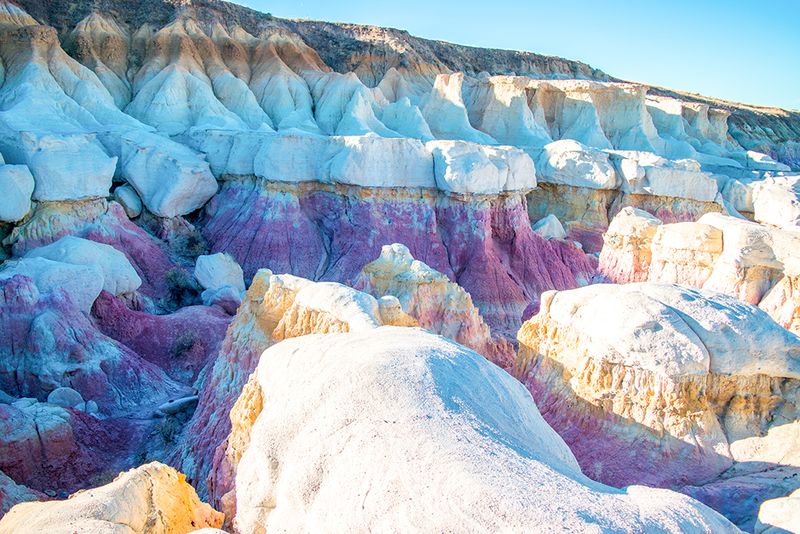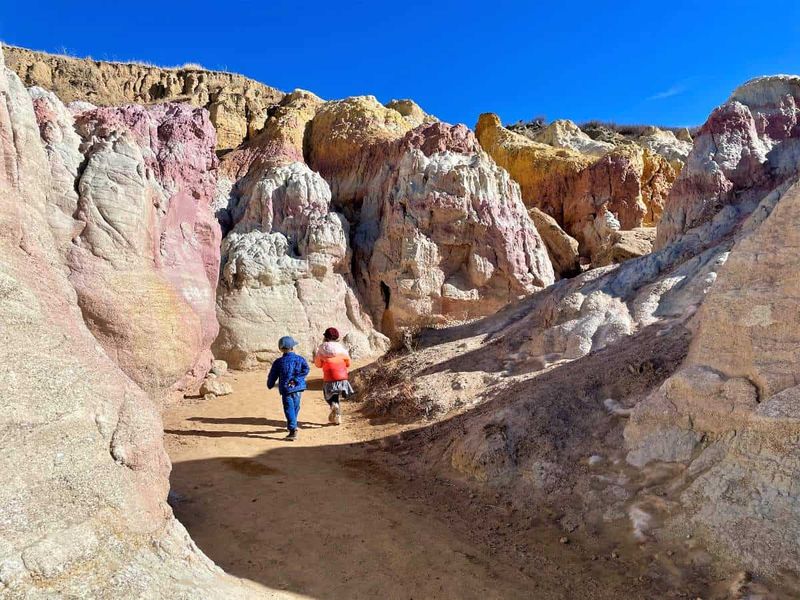Far from Colorado’s famous mountain peaks, a little-known treasure waits on the eastern plains. The Paint Mines Interpretive Park near Calhan is a place where clay spires glow in shades of pink, yellow, red, and white—colors painted by nature over millions of years. Most visitors never imagine such vivid badlands exist in the shadow of the Rockies, yet this 750-acre landscape offers breathtaking geology, ancient history, and surprising wildlife all in one unforgettable setting.
A Vivid Desert Canvas
On the eastern plains of Colorado, near Calhan in El Paso County, lies the Paint Mines Interpretive Park—a striking 750-acre landscape seldom matched in its palette or texture. Hoodoos and spires of clay-rich rock glow in shades of pink, yellow, red, and white, each color born from mineral-rich layers exposed over millions of years of erosion.
The park is more than a visually stunning backdrop—it’s a study in extreme geology set on the high plains, where gently rolling grasslands crash into surreal badland formations. These brilliant outcrops lend the area an otherworldly feel, a monument to both time’s quiet persistence and nature’s bold artistry.
Visitors often describe the scene as stepping onto another planet, where every turn reveals a new shade or texture carved by wind and water.
Layers of Time & Tools of the Past
Beneath the brilliant hues is a deep history of both Earth and humans. Geological deposits of clay-stone and siltstone date to the Paleocene, some 55 to 65 million years ago, when ancient lakes and shifting terrain laid down the sediments. For at least 9,000 years, Native American groups visited the site to gather the colorful clays for pottery, ritual paints, and tools—making the park a rare fusion of natural spectacle and human craft.
The very material that now dazzles visitors was once ground by hands, shaped by culture and applied on vessels, meaning the land holds stories of both geologic epochs and human lives. Archaeologists have uncovered pottery shards and pigment-grinding stones across the area.
Walking these trails connects you to millennia of artistry and survival.
Trailwork, Wildlife & Detailed Terrain
Visitors to the Paint Mines aren’t just spectators—they’re walking through a living mosaic of prairie, badlands and rock formations. The park features around four miles of well-marked trails that wind through the hoodoos, gullies and sandstone caps. Small elevation changes, often under 500 feet, make the routes accessible, yet the terrain radiates richness: dry gullies, sandy ravines, grassy plateaus and the occasional sandstone cap-rock perched on clay spires.
Wildlife thrives here too—mule deer, songbirds, horned toads and coyotes all inhabit this often overlooked corner of Colorado’s eastern edge. Whether you pause for the rare flora or the layered rock faces, the park yields detail after detail.
Every footstep reveals something new and unexpected.
Photographic Magic & Respectful Access
For photographers and wanderers alike, the Paint Mines offer late afternoon light that intensifies the clay layers, long shadows that trace the hoodoos and an ambient stillness rarely found closer to urban hubs. Resources note that the oxidized iron and manganese compounds create the rich reds, yellows and purples that glow beneath the setting sun.
While the visual rewards are immense, the terrain is fragile: hikes must stay on designated paths, climbing on formations is prohibited, and visitors should follow Leave No Trace principles with no removal of rocks or artifacts. Arguments for preservation are grounded—both the archaeological record and geological layers are vulnerable, making intentional care essential for future generations.
Respect ensures this wonder endures for all who follow.
Getting There & Planning Your Visit
Paint Mines Interpretive Park sits about 30 miles northeast of Colorado Springs, making it an easy day trip from the city. From downtown, take Highway 24 east to Calhan, then follow well-marked county roads to the parking area. The drive takes roughly 45 minutes, and the route offers scenic prairie views that gradually hint at the geological surprises ahead.
Entry is free, and the park is open year-round from sunrise to sunset. There are no restrooms or water facilities on-site, so plan accordingly by bringing plenty of water, sunscreen, and snacks. Summer temperatures can soar above 90 degrees, so early morning or late afternoon visits are most comfortable.
Always check weather conditions before heading out, as flash floods can occur during heavy rains.
Geology in Motion: Erosion’s Endless Sculpture
What makes the Paint Mines truly mesmerizing is that erosion never stops. Wind, rain, and seasonal freeze-thaw cycles constantly reshape the hoodoos and spires, meaning the landscape you see today will look different in a decade. Clay layers weather more quickly than the harder sandstone caps, creating the iconic mushroom-shaped formations that tower above the gullies.
Geologists describe the area as a textbook example of differential erosion, where softer and harder rock layers wear away at different rates. Iron oxides produce the warm reds and oranges, while manganese compounds contribute purples and deeper tones. The interplay of minerals and time creates a natural gallery that shifts with every season.
Each visit offers a slightly different masterpiece to admire.
Seasonal Shifts & Best Times to Explore
Spring brings wildflowers that dot the prairie with bursts of color, contrasting beautifully against the red and pink clay. Yucca blooms stand tall, and the air smells fresh after late-season rains. Summer can be scorching, but early mornings reward hikers with cooler temperatures and soft light that enhances the formations’ vibrant hues.
Fall is arguably the most popular season, with mild weather and golden grasses framing the spires in warm tones. Winter visits are less common but offer solitude and a stark beauty, especially after a light snowfall dusts the clay with white. Each season paints the landscape in a new mood, so repeat visits reveal fresh perspectives.
No matter when you go, the park delivers unforgettable moments.
Beyond the Spires: Cultural & Educational Value
Paint Mines Interpretive Park isn’t just a pretty place—it’s a living classroom. Local schools and geology groups regularly visit to study sedimentary processes, mineral composition, and the intersection of natural and human history. Interpretive signs along the trails explain the formation of the hoodoos, the role of ancient peoples, and the importance of conservation.
The park also serves as a reminder that Colorado’s natural wonders extend far beyond its mountains. By highlighting the eastern plains, Paint Mines challenges visitors to expand their definition of beauty and adventure. Community groups host occasional guided hikes and photography workshops, deepening public appreciation for this hidden gem.
Education and exploration go hand in hand here, enriching every step you take.
